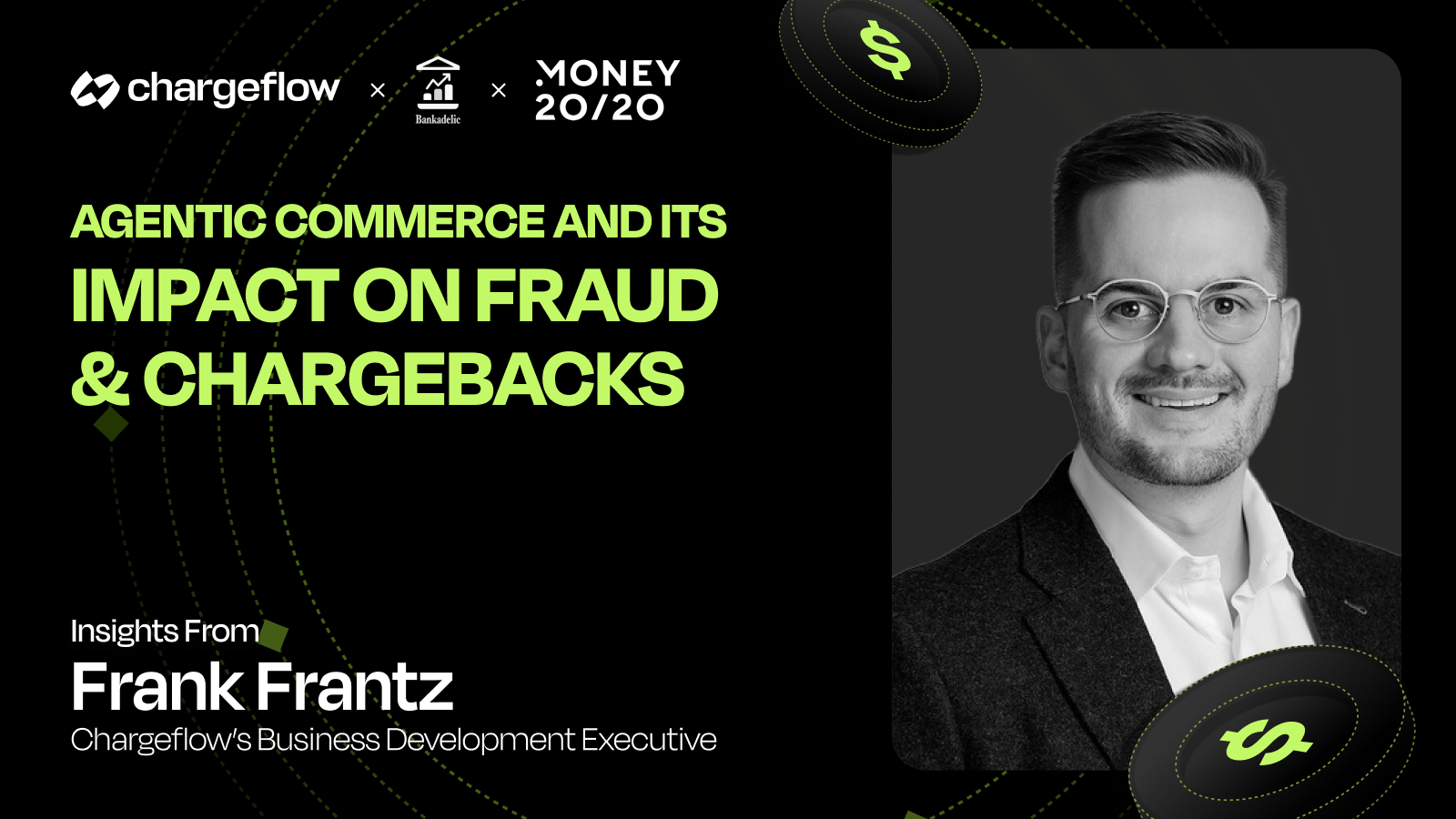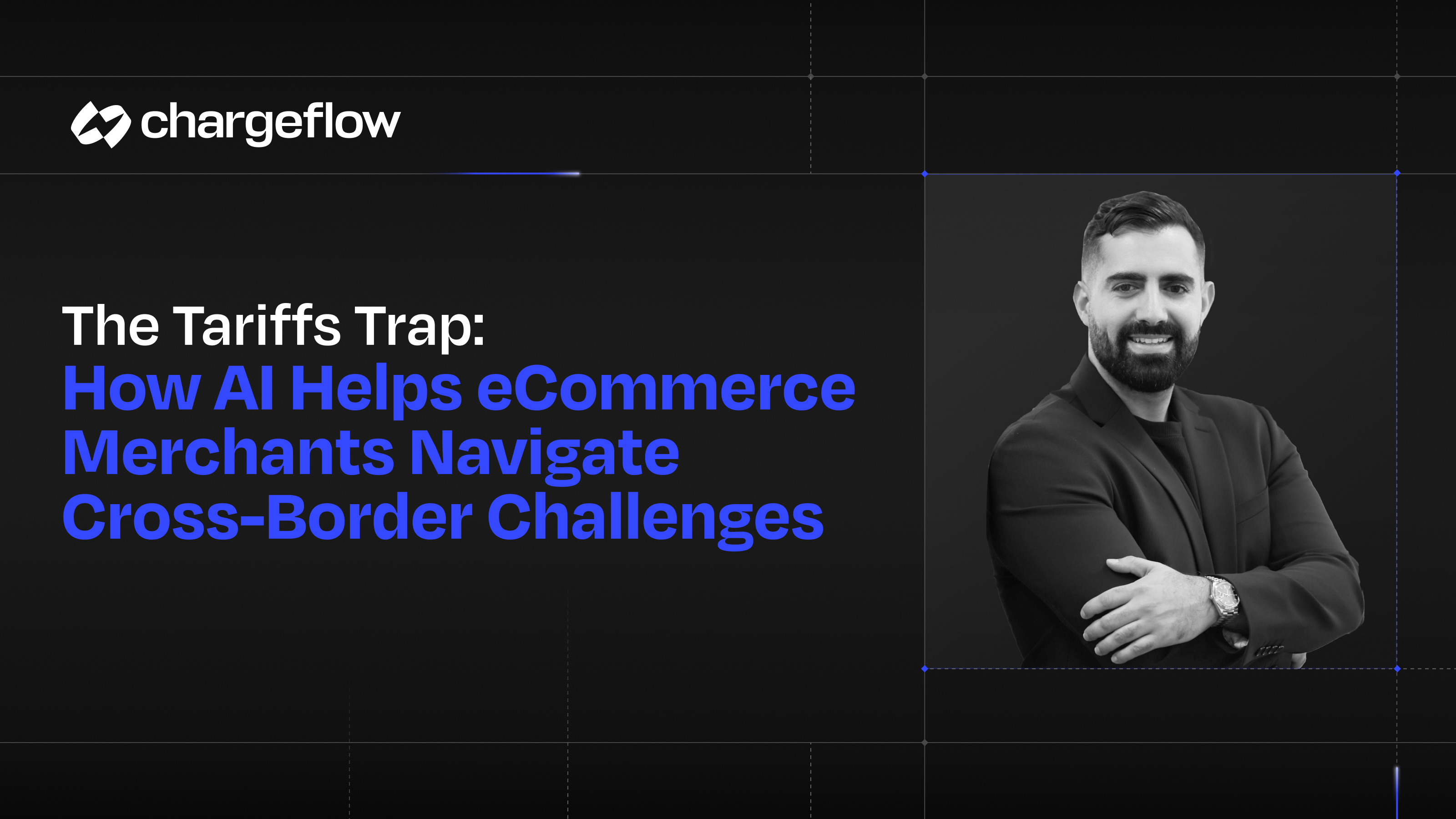Top Fraud Red Flags that Each Store Owner Must Know

Chargebacks?
No longer your problem.
Recover 4x more chargebacks and prevent up to 90% of incoming ones, powered by AI and a global network of 15,000 merchants.
Keep your business secure! Learn the top fraud red flags every store owner should know. Stay one step ahead and protect your profits.
As a merchant, protecting your business from fraud is crucial in today's digital landscape. The rising instances of fraudulent activities can have devastating consequences for your store's reputation, financial stability, and customer trust.
This is why understanding and recognizing the red flags of fraud is of utmost importance. In this article, we will delve into the top fraud red flags that every store owner must be aware of to safeguard their business.
By being vigilant and proactive, you can shield yourself from potential losses and maintain a secure environment for your customers. So, let's dive in and explore the key indicators that can help you identify and combat fraud effectively.
Understanding Fraud
Fraud is a serious concern that every merchant must be well-versed in to protect their business. By understanding the ins and outs of fraud, you can stay one step ahead of potential threats. Let's delve into the key aspects of fraud and equip you with the knowledge you need to safeguard your store.
Definition and Types of Fraud
Fraud, in simple terms, refers to deceptive activities aimed at gaining an unfair advantage or financial gain. As a merchant, it's crucial to familiarize yourself with the different types of fraud you may encounter:
- Identity Theft: Fraudsters assume someone else's identity to make unauthorized transactions, often using stolen personal information.
- Chargebacks: Dishonest customers dispute legitimate transactions to obtain refunds, leaving merchants at a loss.
- Account Takeover: Cybercriminals gain unauthorized access to customer accounts, allowing them to make fraudulent purchases.
Unraveling Fraud Techniques
Fraudsters employ various techniques to carry out their malicious activities. By staying informed about these techniques, you can identify potential red flags and take appropriate action:
- Phishing Scams: Fraudsters pose as trustworthy entities, tricking individuals into revealing sensitive information like passwords and credit card details.
- Synthetic Identity Fraud: This involves creating fictitious identities using a combination of real and fake information to commit fraudulent acts.
- Card Skimming: Criminals use devices to steal credit card information when customers swipe or insert their cards at compromised payment terminals.
Red Flags in Customer Behavior
As a merchant, it's crucial to be aware of the red flags in customer behavior that could indicate potential fraud. By staying vigilant and recognizing these warning signs, you can protect your business from fraudulent activities.
Let's explore some key indicators that require your attention:
1. Frequent Order Cancellations and Returns
Keep an eye on customers who frequently cancel orders or return items. While it's natural for some customers to change their minds occasionally, a consistent pattern of cancellations and returns may raise suspicion. Pay attention to customers who repeatedly order high-value items only to cancel them shortly afterward.
2. Inconsistent Shipping and Billing Addresses
When the shipping address differs from the billing address, it's worth investigating further. Fraudsters often attempt to use stolen credit cards by having products shipped to a different location. Be cautious of customers who frequently change their shipping addresses or provide addresses that don't match their billing information.
3. Abnormal Purchasing Patterns
Unusual purchasing patterns can be a red flag for potential fraud. Look out for customers who make a significant number of orders within a short period, especially if those orders involve high-value items. Fraudsters may attempt to exploit businesses by placing multiple orders with stolen credit cards before they get flagged.
4. Multiple Failed Payment Attempts
If a customer repeatedly tries and fails to make a payment, it could be a sign of fraudulent activity. Fraudsters may attempt to use stolen credit card information, and multiple failed payment attempts can indicate that the card has been blocked or flagged for suspicious behavior.
5. Use of Stolen or Unauthorized Credit Cards
Watch out for customers who provide credit card information that doesn't match the name on the account or whose card has been reported as stolen. Be diligent in verifying the legitimacy of the card and the customer's identity before processing the transaction.
6. Suspiciously High-Value Transactions
Transactions involving unusually high amounts should be thoroughly examined. Fraudsters may attempt to make significant purchases to maximize their gains before the fraudulent activity is detected. Exercise caution when dealing with orders that seem unusually large or out of the ordinary for your business.
Red Flags in Order and Shipping Details
As a store owner, being aware of red flags in order and shipping details can help you identify potential fraudulent activities and protect your business. By paying attention to certain indicators, you can minimize the risk of falling victim to fraud.
Here are some key red flags to watch out for:
1. Mismatched or Incomplete Information
When processing orders, keep an eye out for any discrepancies or missing details in the shipping information. These inconsistencies can be potential red flags for fraudulent transactions. Look for:
- Incomplete shipping addresses: Orders with missing apartment numbers, suite numbers, or incomplete street names could indicate fraudulent intent.
- Phone numbers that don't match the location: Be cautious if the provided phone number doesn't align with the shipping address. Fraudsters often use fake or untraceable numbers.
- Inconsistent email addresses: If the email address used for placing an order differs significantly from the customer's name or appears suspicious, it could be a warning sign.
2. Expedited Shipping Requests
Fraudsters often attempt to rush their fraudulent orders, hoping to receive the goods before their illicit activities are detected. Pay attention to the following:
- Frequent demands for expedited shipping: If you notice a pattern of customers consistently requesting expedited shipping, especially when combined with other red flags, exercise caution before processing the order.
- Inconsistencies between the shipping address and expedited requests: Take note if the shipping address suggests a remote or distant location, but the customer insists on overnight or express shipping. Such inconsistencies warrant further investigation.
3. High-Risk Shipping Destinations
Certain countries or regions have a higher risk of fraudulent activities. Stay vigilant when processing orders destined for these locations:
- Shipping to high-risk countries or regions: Some countries are known for a higher incidence of fraud. Conduct thorough research on such areas and exercise extra caution when fulfilling orders to these destinations.
- Frequent shipping to temporary addresses: If you notice a trend of orders being shipped to temporary addresses like hotels or PO boxes, it could be a potential red flag. Fraudsters often use these addresses to avoid detection and capture.
Red Flags in Communication and Contact Details
When it comes to running an online store, effective communication and reliable contact information are crucial for building trust with your customers. However, in the world of fraud, there are certain red flags to watch out for.
By being aware of these indicators, you can protect your business from potential scams and fraudulent activities.
1. Suspicious Customer Inquiries
As a merchant, you may encounter unusual customer inquiries that raise concerns about potential fraud. These inquiries often revolve around security measures or verification procedures.
If a customer starts asking probing questions about your fraud prevention measures or attempts to bypass security checks, it could be a warning sign.
2. Email Anomalies
Email communication is a common way for customers to interact with your business. However, it's important to be cautious of emails that exhibit suspicious characteristics.
Keep an eye out for emails containing suspicious attachments or links, as these may lead to phishing attempts or malware.
Additionally, be wary of emails coming from free webmail services like Gmail or Yahoo, instead of corporate email addresses, as this could indicate a fraudulent intent.
3. Fake Contact Information
Valid and reliable contact information is vital for a legitimate business. Fraudsters, however, may provide fake contact details to hide their true identities. Look out for invalid or non-existent phone numbers and email addresses. To enhance trust, consider implementing email verification to ensure the authenticity of the email addresses provided.
If you find that customer inquiries go unanswered or the provided contact information is consistently non-responsive, it could be a red flag indicating fraudulent activity.
Red Flags in Reviews and Feedback
By keeping an eye out for these warning signs, you can protect your business and maintain a positive reputation. Let's explore the key red flags in reviews and feedback that every merchant should be aware of.
1. Unusual Review Patterns
When analyzing customer reviews, be attentive to unusual patterns that may raise suspicions. Pay close attention to sudden surges in negative reviews or ratings within a short period of time.
Fraudsters may attempt to damage your reputation by orchestrating a wave of negative feedback. Similarly, if you notice overwhelmingly positive reviews with no negative feedback at all, it could be a red flag of fake or manipulated reviews.
2. Suspicious User Accounts
Keep an eye out for suspicious user accounts that leave reviews. If you come across multiple accounts leaving similar reviews or ratings, it could indicate a coordinated effort to deceive potential customers.
Additionally, be wary of a sudden influx of new accounts with high ratings. Fraudsters may create fake accounts to artificially boost their products or services.
3. Incoherent or Inaccurate Reviews
Read through the content of reviews carefully. Incoherent or inaccurate reviews should be treated with caution. If you come across reviews that have inconsistent product descriptions or mention unrelated or irrelevant products, it could be an indication of fraudulent activities. Fraudsters may use generic or misleading reviews to manipulate potential buyers.
Statistical Impact of Friend Fraud and Chargebacks in Ecommerce
Ecommerce has revolutionized the way people shop, but it has also brought new challenges such as fraud and chargebacks. Understanding the statistical impact of friend fraud, also known as chargeback fraud, is crucial for ecommerce merchants.
Statistics on Friendly Fraud and Chargebacks:
- Global Cost of Ecommerce Fraud in 2023: The global cost of ecommerce fraud is estimated to reach a staggering $27.9 billion in 2023, highlighting the significant financial burden it poses to online merchants.
- Share of Friendly Fraud in Ecommerce Fraud: Friendly fraud accounts for approximately 75% of ecommerce fraud cases, signifying its dominant role in contributing to the overall financial losses suffered by merchants.
- Financial Impact of Friendly Fraud: Each year, friendly fraud costs the ecommerce industry an estimated $20.9 billion, underscoring the magnitude of this issue and its impact on merchants' profitability.
- Average Cost of a Friendly Fraud Chargeback: The average cost associated with a friendly fraud chargeback is $225. This substantial amount further accentuates the financial strain placed on merchants who fall victim to friendly fraud.
- Percentage Loss to Friendly Fraud: For every $100 in sales, ecommerce merchants can expect to lose $2.25 to friendly fraud. This ongoing loss erodes profits and underscores the need for effective prevention measures.
Common Types of Friendly Fraud
- False Claims of Non-receipt: One of the most prevalent forms of friendly fraud occurs when a customer receives a product but files a chargeback claiming that they never received it.
- Product Misrepresentation Claims: Customers may falsely claim that the received product does not match its description, even though it does. This type of fraud adds to the financial burden on merchants.
- Unauthorized Charges: Customers may dispute charges, alleging that they were billed more than they agreed to pay, despite having willingly made the purchase.
Chargeflow: The Ultimate Solution for Fighting Fraudulent Chargebacks
Chargebacks are a major problem for eCommerce merchants. They can cost businesses thousands of dollars in lost revenue, not to mention the time and hassle of disputing them.
But there is a solution: Chargeflow. Chargeflow is a fully automated chargeback management solution that uses machine learning and artificial intelligence to help you fight fraudulent chargebacks.
With Chargeflow, you can:
- Automate the entire chargeback process: Chargeflow takes care of everything from dispute notification to evidence collection and submission. This frees up your time so you can focus on running your business.
- Increase your chargeback win rate: Chargeflow's machine learning algorithms help you create more effective chargeback responses, which increases your chances of winning disputes.
- Reduce your chargeback costs: Chargeflow's automated process helps you reduce the time and resources spent on chargebacks, which saves you money.
So how does Chargeflow work?
Chargeflow starts by collecting all of the evidence you need to fight a chargeback. This includes things like order information, shipping information, and customer correspondence.
Then, Chargeflow uses its machine learning algorithms to analyze this evidence and create a custom-tailored chargeback response. This response is tailored to the specific details of your case, and it is designed to be as persuasive as possible.
Finally, Chargeflow submits your chargeback response to the issuing bank. The issuing bank will then review your response and make a decision about whether to uphold the chargeback or not.
Chargeflow is the most comprehensive and effective chargeback management solution on the market. It is used by thousands of eCommerce merchants, and it has a proven track record of success.
If you are serious about fighting fraudulent chargebacks, then you need to try Chargeflow. It is the only way to ensure that you are getting the best possible chance of winning your disputes.
Try Chargeflow today and start fighting fraudulent chargebacks with confidence!

Chargebacks?
No longer your problem.
Recover 4x more chargebacks and prevent up to 90% of incoming ones, powered by AI and a global network of 15,000 merchants.






























.png)








